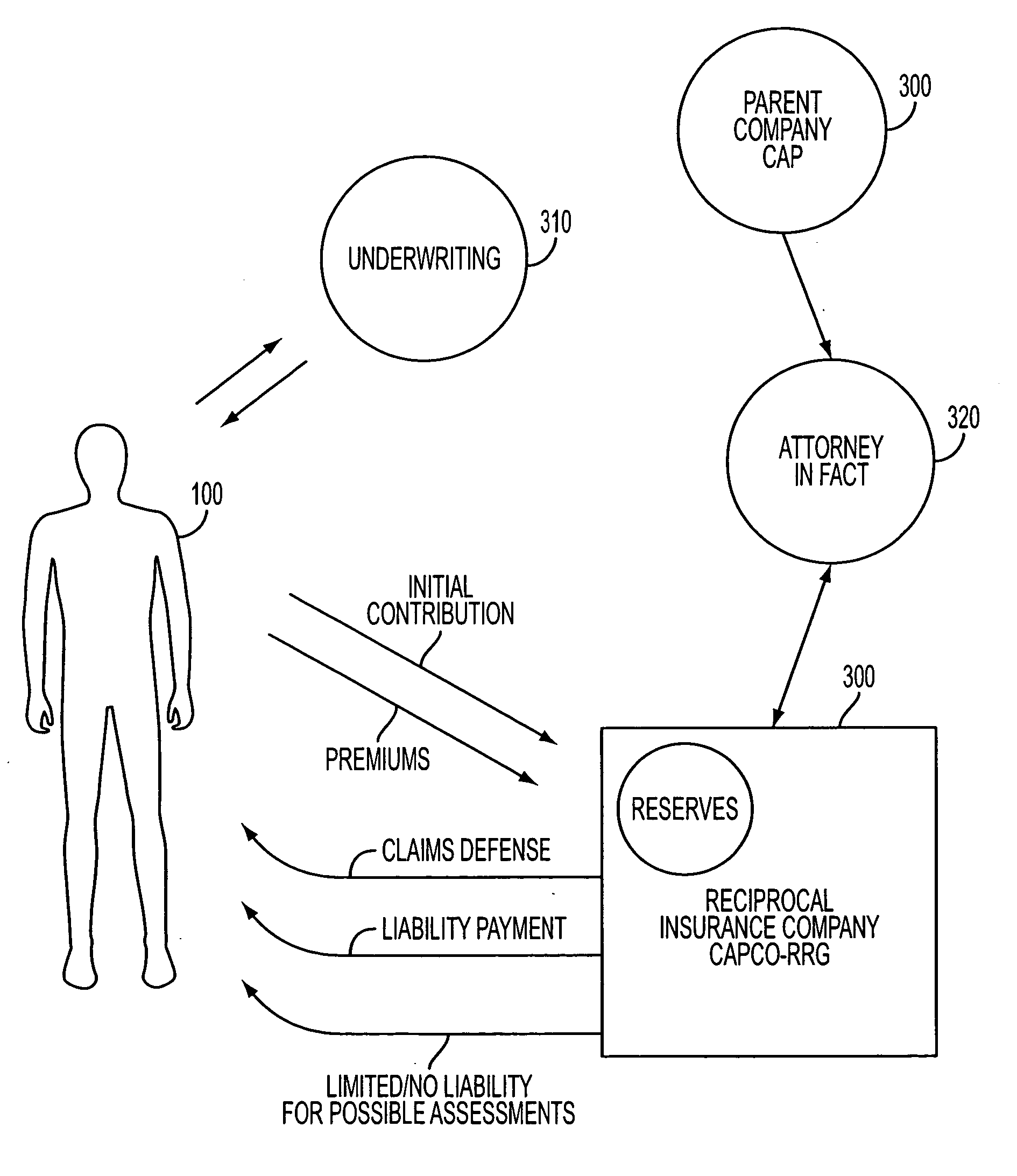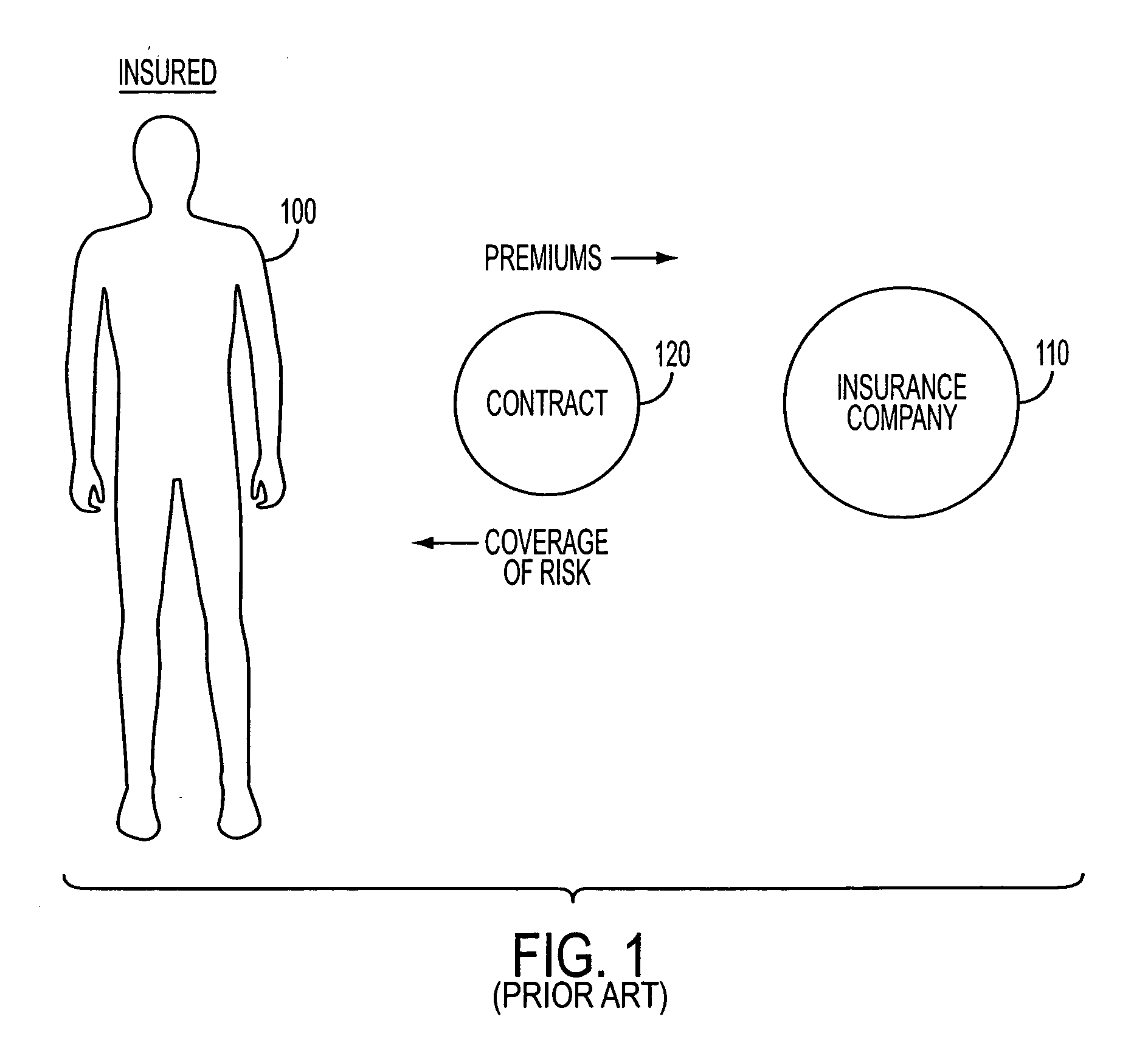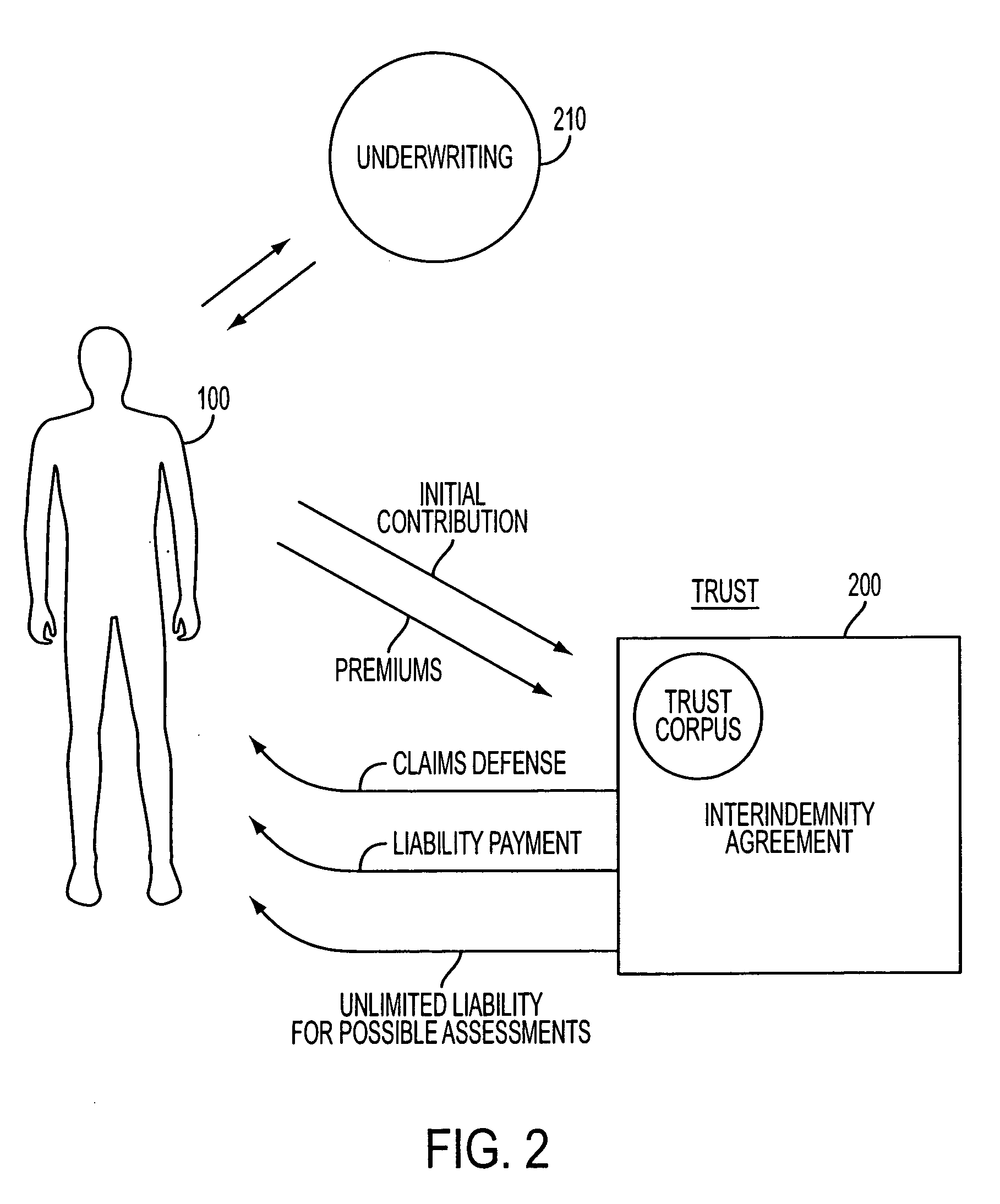Property/casualty insurance and techniques
a technology applied in the field of property and casualty insurance and techniques, can solve problems such as recurring losses
- Summary
- Abstract
- Description
- Claims
- Application Information
AI Technical Summary
Benefits of technology
Problems solved by technology
Method used
Image
Examples
Embodiment Construction
[0018]FIG. 1 is a diagram illustrating the relationship between an insurer and an insured as known in the prior art. In FIG. 1, an insured (100) enters into a contract (120) with an insurance company (110) pursuant to which the insured agrees to pay premiums to the insurance company in exchange for an insurance company assuming all or part of economic loss which results from a risk occurring. Examples of a risk that might cause economic loss against which an insured might desire insurance include: [0019] (1) homeowner's liability; [0020] (2) professional negligence liability for physicians, dentists or other professionals; or [0021] (3) automobile liability.
[0022] Insurance companies are highly regulated entities. These entities are required to set aside appropriate reserves to pay for the eventuality that a loss might occur. The reserves generally must take into account both reported (but not yet paid) losses, and incurred but not reported (“IBNR”)losses.
[0023] Currently, insuran...
PUM
 Login to View More
Login to View More Abstract
Description
Claims
Application Information
 Login to View More
Login to View More - R&D
- Intellectual Property
- Life Sciences
- Materials
- Tech Scout
- Unparalleled Data Quality
- Higher Quality Content
- 60% Fewer Hallucinations
Browse by: Latest US Patents, China's latest patents, Technical Efficacy Thesaurus, Application Domain, Technology Topic, Popular Technical Reports.
© 2025 PatSnap. All rights reserved.Legal|Privacy policy|Modern Slavery Act Transparency Statement|Sitemap|About US| Contact US: help@patsnap.com



